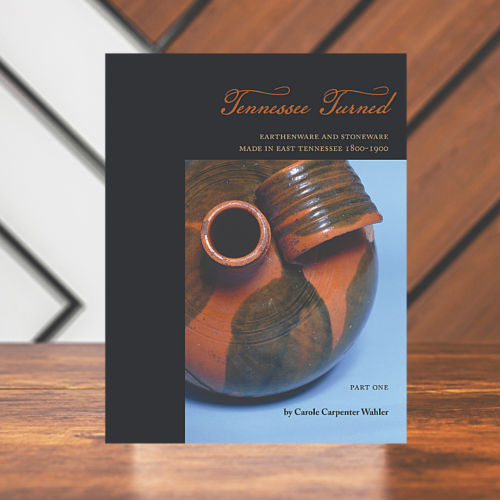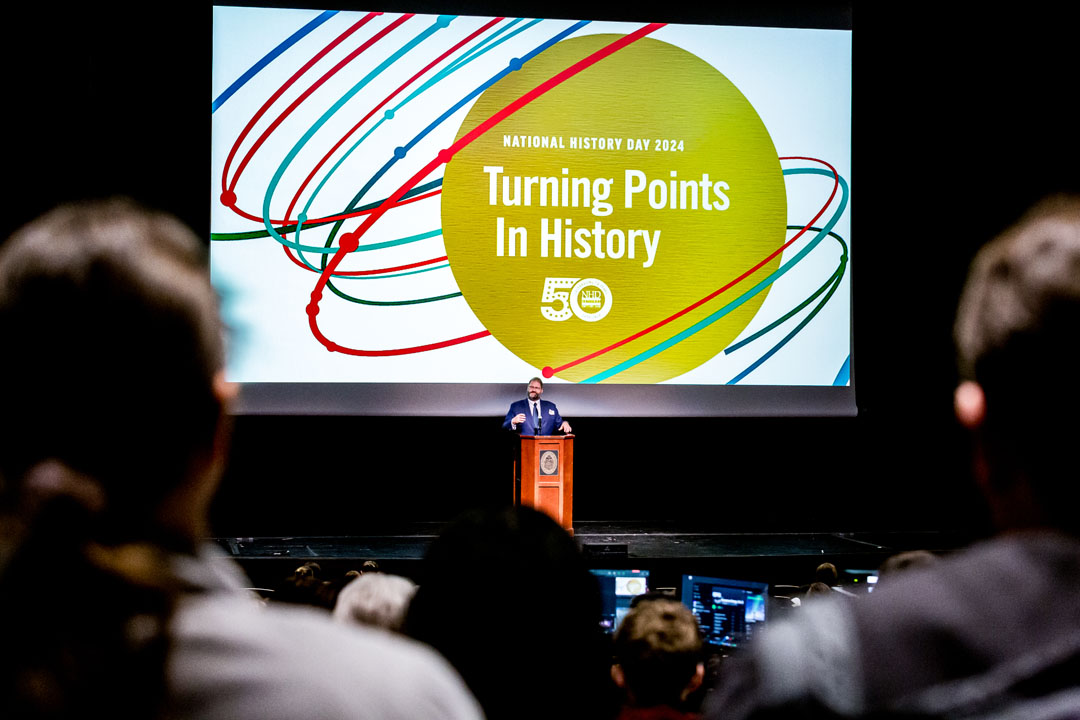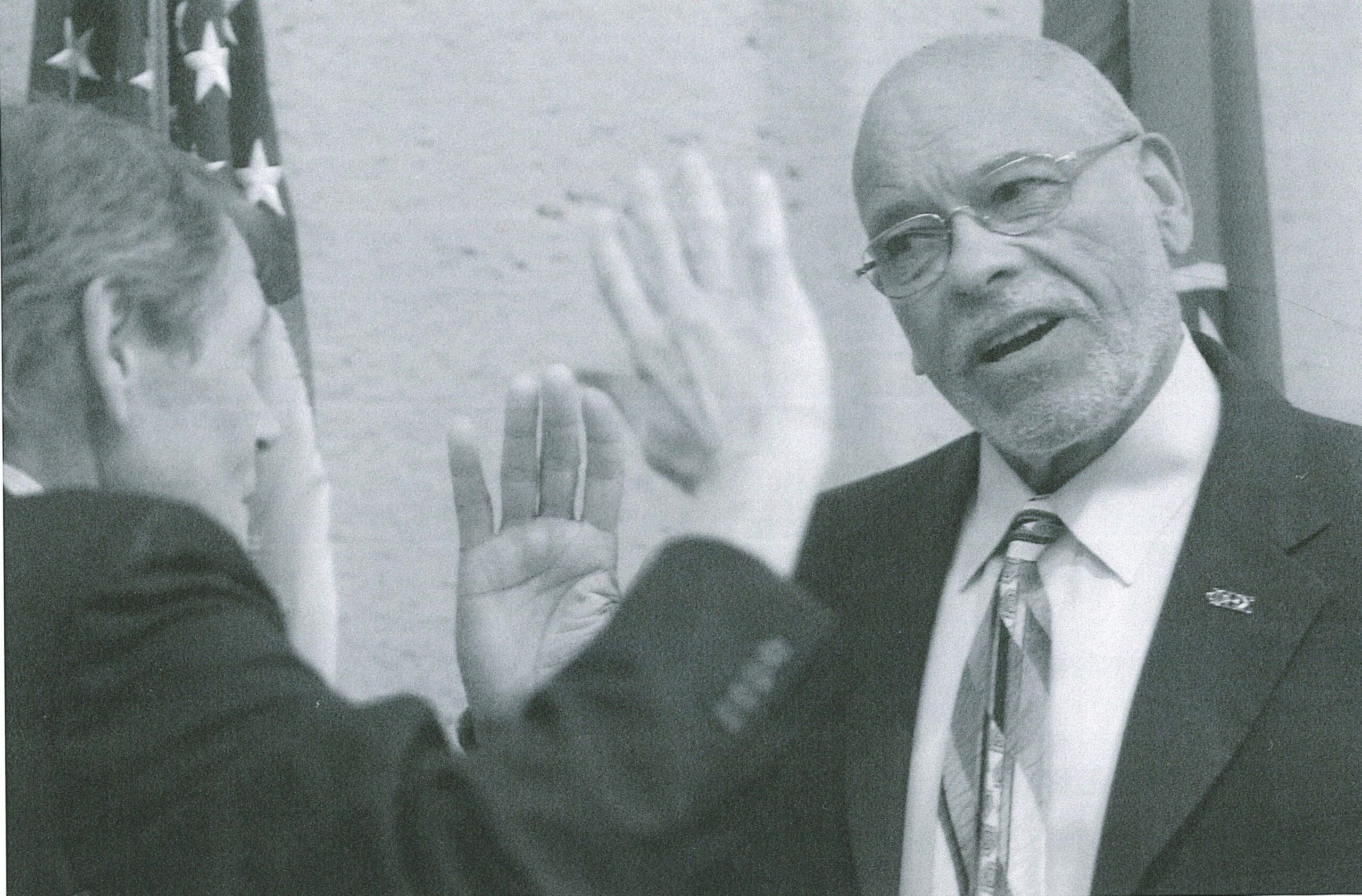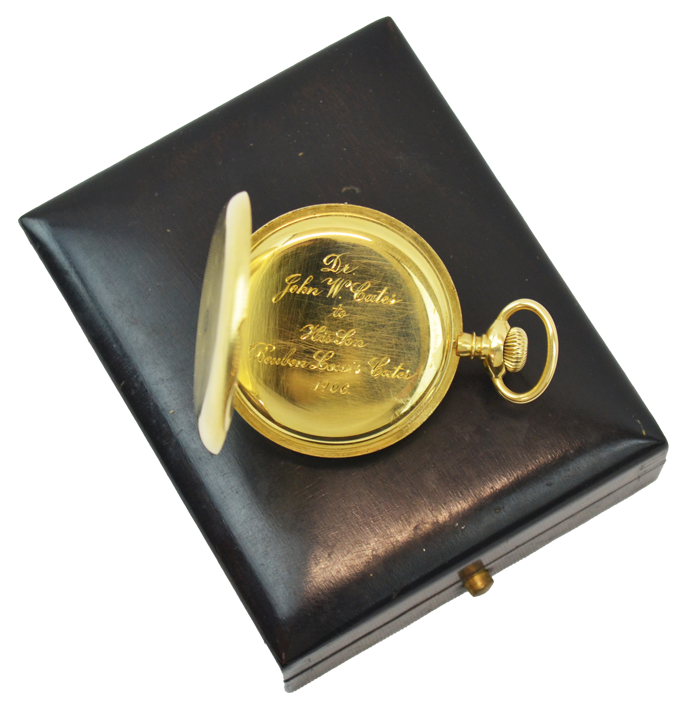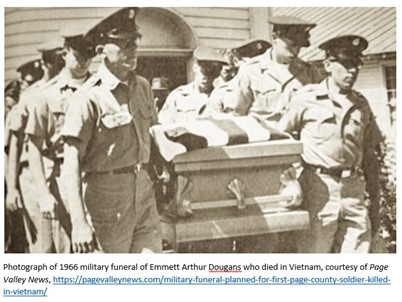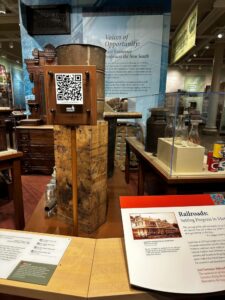 The impetus for this new project was Girl Scout Mia Warren, who brought her Gold Award project to East Tennessee Historical Society and Knox County Public Library team members to develop a comprehensive gallery tour for visually impaired guests using interpretive text and written descriptions of key objects. Mia was inspired to pursue this as her Gold Award project after visiting museums with her friend Campbell Rutherford, who is visually impaired. “It would be nice not to rely completely on someone else, so if I wanted to stay back and finish looking at an exhibit, while someone else went on ahead, I could have that freedom,” remarked Campbell.
The impetus for this new project was Girl Scout Mia Warren, who brought her Gold Award project to East Tennessee Historical Society and Knox County Public Library team members to develop a comprehensive gallery tour for visually impaired guests using interpretive text and written descriptions of key objects. Mia was inspired to pursue this as her Gold Award project after visiting museums with her friend Campbell Rutherford, who is visually impaired. “It would be nice not to rely completely on someone else, so if I wanted to stay back and finish looking at an exhibit, while someone else went on ahead, I could have that freedom,” remarked Campbell.
Approximately 20 million Americans (or 8%of the US population) have some degree of visual impairment. Museums across the country offer varying degrees of access for visually impaired guests, from Braille handouts to audio tours.
Campbell recommended an innovative method that allows visually impaired visitors to utilize screen readers on their personal devices. Instead of being asked to carry an audio stick, download a separate application, or use other unfamiliar technology, the MIA system allows guests to scan QR codes placed strategically throughout the History Center. These codes open webpages that contain a comprehensive written description of the space. Specially optimized for screen readers, the guest’s device then reads the description to the guest, providing them cues on how to safely navigate the space and in-depth descriptions of what is displayed in that space. The webpages may also be used by guests with restricted eyesight, who may choose to adjust the font size and contrast of the text, or by deaf-blind guests, who may access the same content via a portable Braille reader.
“It’s all about thinking of others,” said Mia. “We can help a lot of people who just want to get the full experience out of a museum.”
The East Tennessee History Center is grateful to Mia and Campbell for helping move this new accessibility initiative from discussion to action. The History Center is also indebted to Mia for the countless hours she expended in organizing the museum’s interpretive text, measuring distances between displays, and writing descriptions of objects.
MIA: Museums Increasing Accessibility is a project of the Museum of East Tennessee History and is an on-going initiative to increase accessibility in the museum for all.

Mia Warren is a Girl Scout in Troop 20496 from Knoxville, Tennessee, who was awarded a Gold Award, the organization’s highest honor, on December21, 2023, for the project MIA: Museums Increasing Accessibility. Girl Scouts pursuing a Gold Award are asked to propose and implement a lasting solution to a societal problem in their community. Mia chose museum accessibility, thinking of her family friend Campbell Rutherford of Dandridge, Tennessee, who was born with Leber congenital amaurosis (LCA), a rare type of inherited eye disorder. When the two visited museums together, they quickly learned that there were significant challenges for Campbell to have a meaningful visit. “There’s no spotting a museum and saying, ‘Oh! I might step in there for a bit,’” said Campbell. “You usually have to call ahead and see what the options are, to maybe schedule someone to walk through with you in advance. It’s more of an ordeal than it should be.”
Mia partnered with the Museum of East Tennessee History, where for the past two years she has researched best practices in museum accessibility and tested solutions for improving the museum-going experience with Campbell and other members of the visually impaired community. With assistance from team members from the East Tennessee Historical Society and Knox County Public Library, Mia created a QR code-based system that not only best served her target audience but also was able to be integrated into existing exhibitions. This system of QR codes provides access to a comprehensive written description of the museum, which allows individuals with visual impairments to navigate the entire museum independently using their own screen reader technology. Mia authored the comprehensive written description of the museum, which includes measurements between locations, all of the museum’s interpretive text, descriptions of objects on display, and other important cues.
“I didn’t realize how much I saw,” reflected Mia on her experience describing the Museum in text. “There’s a lot of hazards that you wouldn’t normally notice. On the cabin, there’s a shelf that a white cane wouldn’t be able to hit; I would have never thought about, because I can see it.” That detail, which assist visually impaired guests to safely move about the space, is now included in the MIA system.
The East Tennessee History Center is committed to increasing access for all. MIA: Museums Increasing Accessibility, which was named in honor of Mia’s hard work, is the first step in a series of planned initiatives to ensure that all guests have an equal opportunity to experience and appreciate the history of East Tennessee. For example, while Mia’s project initially focused on the museum, the MIA system has been installed throughout the East Tennessee History Center, so that visually impaired visitors to the Calvin M. McClung Historical Collection and Knox County Archives can independently navigate those spaces. Museum team members also hope to share the MIA system with other cultural institutions in hopes it becomes an industry standardized platform for accessibility. “Ideally, I would hope other museums would see this and realize that it’s not that complicated to make something accessible, “said Mia. “Then make it just like a normal thing, like you make a new exhibit and you just do this with it.”





 The impetus for this new project was Girl Scout Mia Warren, who brought her Gold Award project to East Tennessee Historical Society and Knox County Public Library team members to develop a comprehensive gallery tour for visually impaired guests using interpretive text and written descriptions of key objects. Mia was inspired to pursue this as her Gold Award project after visiting museums with her friend Campbell Rutherford, who is visually impaired. “It would be nice not to rely completely on someone else, so if I wanted to stay back and finish looking at an exhibit, while someone else went on ahead, I could have that freedom,” remarked Campbell.
The impetus for this new project was Girl Scout Mia Warren, who brought her Gold Award project to East Tennessee Historical Society and Knox County Public Library team members to develop a comprehensive gallery tour for visually impaired guests using interpretive text and written descriptions of key objects. Mia was inspired to pursue this as her Gold Award project after visiting museums with her friend Campbell Rutherford, who is visually impaired. “It would be nice not to rely completely on someone else, so if I wanted to stay back and finish looking at an exhibit, while someone else went on ahead, I could have that freedom,” remarked Campbell.



